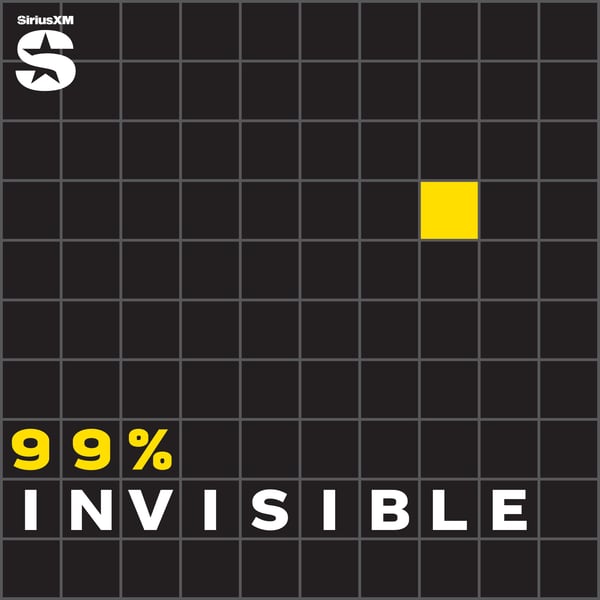Ubiquitous Icons: Peace, Power, and Happiness
99% Invisible
SiriusXM Podcasts and Roman Mars
4.8 • 27.5K Ratings
🗓️ 13 November 2019
⏱️ 36 minutes
🧾️ Download transcript
Summary
Transcript
Click on a timestamp to play from that location
| 0:00.0 | This is 99% invisible. I'm Roman Mars. |
| 0:04.0 | There are symbols all around us that we take for granted, |
| 0:08.0 | like the lightning strike icon to indicate that something is high voltage, |
| 0:12.0 | or a little campfire to indicate that something is high voltage or a little campfire to indicate |
| 0:14.4 | that something is flammable. Those icons they might have some fascinating origin story |
| 0:19.2 | but their symbolism is pretty obvious. But other abstract icons are not so straightforward. Like why does |
| 0:27.5 | one vertical line and two angled lines inside a circle indicate peace? Where does the smiley face come from? Or the power button. Today, we |
| 0:36.2 | sent out the 99-PI team to dig into the backstory behind some of those images you see every |
| 0:41.6 | day. You might know what they mean, but you don't know why they mean |
| 0:45.9 | what they mean. We're calling this episode, Ubiquitous Icons. cons. So, Emmett is here to brings the story of the peace symbol. |
| 0:59.2 | Here I am. |
| 1:00.2 | And we're not talking about the peace symbol, like two fingers up when someone takes a picture. |
| 1:04.4 | Right, no. The drawing of like a circle with a little stick. |
| 1:08.3 | Yeah, the one that looks kind of like the Mercedes-Benz logo that you see everywhere. |
| 1:13.7 | I mean it's kind of hard to think of a more ubiquitous icon than the piece symbol. |
| 1:17.6 | Yeah, right, it's like truly, truly everywhere. |
| 1:21.1 | And I think what interested me about it was that despite its sort of total ubiquity, it has a very, very specific origin story. |
| 1:28.0 | Oh, that's cool. Okay, so hit me with it. |
| 1:30.0 | So the symbol goes back to the 1950s and a British organization called the |
| 1:36.2 | Direct Action Committee Against Nuclear War. That's a good name that does what it says on the 10. Yeah, yeah, it's pretty self-explanatory. They were an anti-nuclear group. You know, it was the 1950s. It was sort of the early days of the Cold War and nuclear proliferation and Britain itself was developing |
| 1:57.1 | a hydrogen bomb. And there was this growing activist sentiment that they didn't want the country to go down that path. |
| 2:04.7 | And so in 1958 they started organizing this really big march from London to a weapons |
... |
Please login to see the full transcript.
Disclaimer: The podcast and artwork embedded on this page are from SiriusXM Podcasts and Roman Mars, and are the property of its owner and not affiliated with or endorsed by Tapesearch.
Generated transcripts are the property of SiriusXM Podcasts and Roman Mars and are distributed freely under the Fair Use doctrine. Transcripts generated by Tapesearch are not guaranteed to be accurate.
Copyright © Tapesearch 2025.

